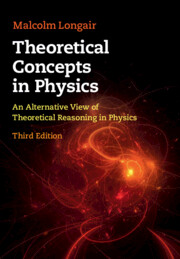Book contents
- Frontmatter
- Dedication
- Contents
- Preface and Acknowledgements
- 1 Introduction
- Case Study I The Origins of Newton’s Laws of Motion and of Gravity
- Case Study II Maxwell’s Equations
- 5 The Origin of Maxwell’s Equations
- 6 Maxwell (1865): A Dynamical Theory of the Electromagnetic Field
- 7 How to Rewrite the History of Electromagnetism
- Case Study III Mechanics and Dynamics: Linear and Non-linear
- Case Study IV Thermodynamics and Statistical Physics
- Case Study V The Origins of the Concepts of Quantisation and Quanta
- Case Study VI Special and General Relativity
- Case Study VII Cosmology and Physics
- Author Index
- Subject Index
6 - Maxwell (1865): A Dynamical Theory of the Electromagnetic Field
from Case Study II - Maxwell’s Equations
Published online by Cambridge University Press: 27 March 2020
- Frontmatter
- Dedication
- Contents
- Preface and Acknowledgements
- 1 Introduction
- Case Study I The Origins of Newton’s Laws of Motion and of Gravity
- Case Study II Maxwell’s Equations
- 5 The Origin of Maxwell’s Equations
- 6 Maxwell (1865): A Dynamical Theory of the Electromagnetic Field
- 7 How to Rewrite the History of Electromagnetism
- Case Study III Mechanics and Dynamics: Linear and Non-linear
- Case Study IV Thermodynamics and Statistical Physics
- Case Study V The Origins of the Concepts of Quantisation and Quanta
- Case Study VI Special and General Relativity
- Case Study VII Cosmology and Physics
- Author Index
- Subject Index
Summary
Maxwell's great paper of 1865 on the theory of the electromagnetic field is analysed in detail, emphasising the revolutionary nature of its contents.Building on his discovery of the equations for the electromagnetic field, he reformulated the theory without recourse to a mechanical model of the field, although his thinking was still strongly influenced by Newtonian mechanics. He emphasised the primacy of fields as the vehicle for transmitting forces and abolished the Newtonian concept of action at a distance. Fields pervaded the aether, endowing empty space with physical properties. In the new formalism, he demonstrated again that light is electromagnetic radiation.
Keywords
- Type
- Chapter
- Information
- Theoretical Concepts in PhysicsAn Alternative View of Theoretical Reasoning in Physics, pp. 107 - 122Publisher: Cambridge University PressPrint publication year: 2020

